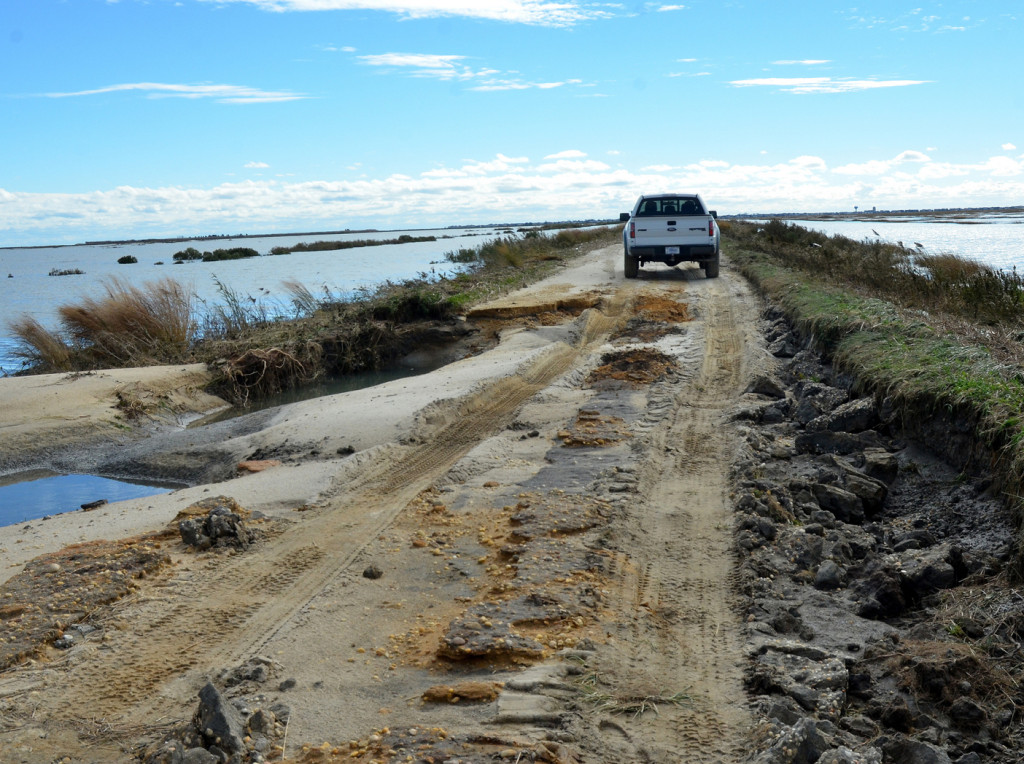There was an air of resignation in the voice of retired deputy policy chief Leslie Houston as she spoke after seeing for the first time what was left of her garage in Long Beach Island, New Jersey, after Hurricane Sandy. As Houston—one of the subjects of the new documentary film This Time Next Year, which debuted at the Tribeca Film Festival last weekend—sifts onscreen through her belongings, flooded and ruined after her house took on over five feet of seawater, she pauses and looks into the camera to address the audience with an explanation and an apology.
“I know it was just a garage, people, but it was my garage.”
Houston’s story is one of many that filmmakers Jeff Reichert and Farihah Zaman tell throughout the year after Sandy as the small town on the Jersey Shore rallies to rebuild. That upward trajectory of perseverance is the film’s dominant motif, portrayed through montages and sequences of construction, business re-openings, and family homecomings.
For the residents of Long Beach Island, the ocean itself remains a character in their stories even after the storm. It is the monster that tried to destroy their town, and yet it remains the reason for the town’s existence and the residents’ attachment to it. While the film remains notably aloof from politics, barely ever mentioning “the government,” global warming or climate change, the residents’ stories project a sense of anxiety over what the next storm will bring. Whether exacerbated by carbon emissions or not, the prospect of another Sandy haunts the characters and their otherwise sunny optimism and steadfast sense of rebirth.
This anxiety plays out alongside another unexplored prospect that hovers below the conscious surface of the film: the terrifying fragility of the American Dream. Long Beach Island is a middle-class community, and the archetypes of small-town and suburban Americana are everywhere in the film: the high school proms and football games, the summer days at the beach, the Main Street of sandwich shops and ice cream parlors. The town is dependent on business from summer tourists and people who keep second homes there. Aside from Captain Houston and her flooded garage, another woman who lost her house entirely broke into tears remembering how her kids and her kids’ friends “grew up on” the house’s back deck. The Jersey mythology of Bruce Springsteen and Bon Jovi songs is not entirely fictional, and Long Beach Island is living proof.
As we meet the teachers, cops, and small business owners who live in Long Beach Island year-round, we see signs that virtually everyone in the film is only one bad break away from losing everything. One woman had lost her husband years before and has to work two low-wage jobs to support her special-needs son. Tourists don’t return in summer in their usual numbers, and a business’s sales are down 60%, putting it at risk of going under. Hopes turned on whether people could receive government grants of $10,000 to $12,000 so they could stay in their homes and afford to raise the houses onto stilts so they could better ride out future storms. Insurance companies are continually railed against, never really coming through, never really doing enough to help people get back on their feet. The community spirit and celebration of the town’s small triumphs are palpable in the images on screen, but the viewer cannot escape the residents’ unspoken fear: What if it’s not enough?
Even though the storm provides the film’s focal point, this question of enough reaches beyond Hurricane Sandy or Long Beach Island and points to the backdrop of the precarious economic situation facing all communities like Long Beach Island. The storms facing the American middle class may have been worse in 2001 and 2008-10, but the truth is that it’s been raining for years. Perhaps one number tells the tale more simply and succinctly than any other: the news last week that median income for the US middle class has grown only 0.3% since 2000 after adjusting for inflation, and that America’s middle class is no longer the world’s wealthiest, now coming in second to Canada’s. Middle-class incomes in Canada have grown 19.7% since 2000; those in the UK have climbed at the same rate. When most Americans feel like they’re just managing to tread water, they’re not exaggerating.
Reichert and Zaman’s last feature documentary, the critically acclaimed Remote Area Medical, focused on how many of the poorest Americans are left behind and struggling. With This Time Next Year, they show us how the middle class may not be that far behind, only one more big wave from getting dragged under. It’s a subject that deserves far more exploration — and action.
Tristan Snell is the co-founder of The Brooklyn Quarterly. A native of Texas who grew up in Virginia, he is currently a writer and lawyer living in Brooklyn.



